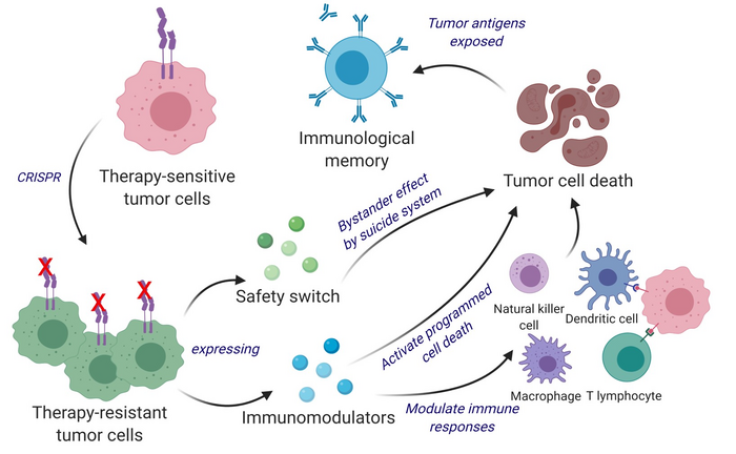Cancer can be defeated with cancer.
This statement may sound silly initially, but that's what a team of scientists at Harvard Medical School's Brigham and Women's Hospital (BWH) has recently done in their effort to develop a vaccine against cancer.
Whether this vaccine will soon move to clinical trials and on to general use is still up for debate as of the writing of this article.
BWH Cancer Vaccine Details
BWH scientists recently developed a new cell therapy approach to eliminate the cancerous tumor and provide training to a person's immune system to gain long-term immunity to prevent cancer from recurring, per A Harvard Gazette article.
According to Khalid Shah, director of the Center for Stem Cell and Translational Immunotherapy, and the vice chair of research in the Department of Neurosurgery at the Brigham and faculty at Harvard Medical School and Harvard Stem Cell Institute, his team "repurposed" cancer cells into cancer killers and vaccines using gene engineering.
Through this repurposing process using the gene-editing tool CRISPR-Cas9, they created a therapeutic that kills tumor cells and stimulates the immune system to both to destroy tumors and prevent cancer.

To do so, Shah and his team used living tumor cells instead of inactivated ones that will travel long distances across the brain to return to where their fellow tumor cells are in the body. Once there, the repurposed cells will release a tumor cell-killing agent and train the immune system to spot, tag, and remember them to set the groundwork for a long-term anti-tumor response.
This approach is different from what is usually used, according to Interesting Engineering. Typically, therapeutic tumor cells like the ones used in the study are inactivated by lysis or irradiation to enhance immunogenicity.
However, the BWH scientists suggest that this approach only delivered limited or no health benefits against brain cancer.
Shah said that living tumor cells have an unusual feature to hone into their fellow tumor cells. As such, they used this feature against itself and other tumor cells to administer the cancer-killing agent.
How Promising Is It?
Shah's approach has only been tested on mouse models as of the writing of this article. For their study, the team used tumor cells in different mice strains, including the one bearing bone marrow, liver, and thymus cells derived from humans, mimicking the human immune microenvironment.
Results seem promising, with the vaccine eradicating the cancerous tumor cells as expected. Its application on the mice models was proven to be safe, applicable, and efficacious.
Shah and his team also noted that this approach can also be applied to a wider range of solid tumors and that further investigations into its applications are needed to improve it.
Is It Safe For Humans?
While the results seem promising on mice, the vaccine is not yet ready to be used on humans due to the study not explaining much about recapitulating tumor microenvironments.
However, Shash and his are working on such limitations to eventually make it safe enough for them to move on from animal trials to clinical trials with the next-generation tumor cell-based vaccines.
"Our goal is to take an innovative but translatable approach so that we can develop a therapeutic, cancer-killing vaccine that ultimately will have a lasting impact in medicine," Shah said.
The findings of Shah and his team are published in "Science Translational Medicine."
Related Article : Scientists Have Engineered Parasitic Worms That Can Kill Cancer Cells









